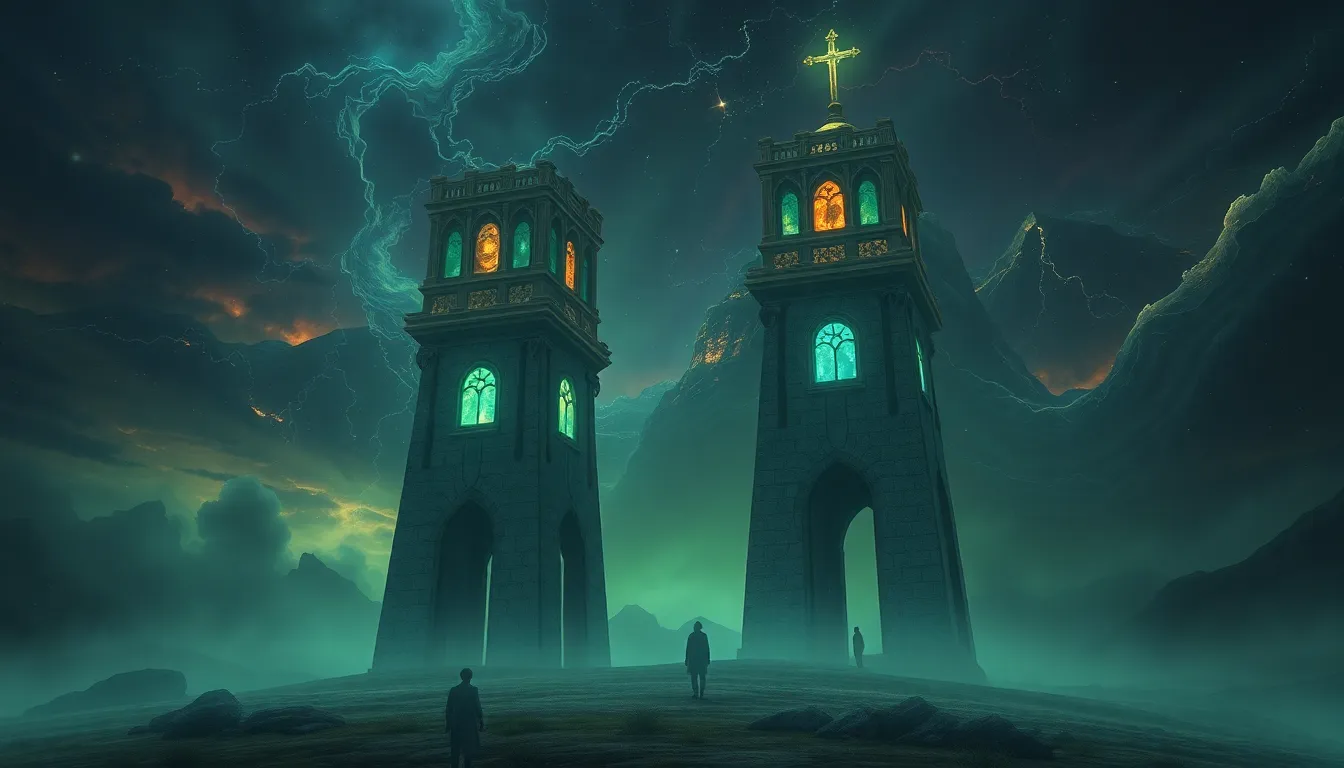The Sacred Watchtowers: Guardians of Mythical Realms
Introduction to Sacred Watchtowers
Throughout history, sacred watchtowers have played a significant role in various cultures as symbols of protection and guardianship. These towering structures are often depicted as gateways to mythical realms, serving not just as physical landmarks but as spiritual sentinels guarding the boundaries between the mundane and the divine. In many traditions, watchtowers embody the connection between our world and the mystical realms beyond, representing vigilance, strength, and a bridge to the unknown.
Historical Context of Watchtowers in Mythology
In ancient civilizations, watchtowers were interpreted in numerous ways, often intertwined with the beliefs and practices of the cultures that built them. For instance:
- Greek Mythology: The Tower of the Winds served as a monumental sundial and a weather vane, symbolizing the power of the gods over nature.
- Norse Mythology: Heimdall, the god of vigilance, is said to watch over the Bifrost, the rainbow bridge connecting Midgard and Asgard, serving as a protective watchtower between realms.
- Eastern Mythologies: In Chinese culture, pagodas often acted as spiritual watchtowers, where each level symbolized a different layer of existence, connecting the earth with the heavens.
Architectural Features of Sacred Watchtowers
Architecturally, sacred watchtowers are often characterized by their height and distinct design, which symbolize their function as guardians. Typical features include:
- Height: Their towering presence allows for a broad view of the surrounding area, signifying vigilance and watchfulness.
- Materials: Often constructed from stone or wood, these materials are chosen for their durability and connection to the earth.
- Symbolic Elements: Many watchtowers feature engravings or carvings of protective deities, animals, or celestial symbols that enhance their role as guardians.
The architecture of these watchtowers not only serves a functional purpose but also connects them to the realms they guard, acting as physical manifestations of their spiritual significance.
Cultural Symbolism: Watchtowers as Portals
In many cultural narratives, watchtowers are perceived as gateways or portals between different worlds. This threshold symbolism is significant in mythology and folklore, representing:
- Transition: Watchtowers symbolize the transition from the known to the unknown, where travelers might embark on journeys toward enlightenment or peril.
- Protection: They serve as barriers against malevolent forces, providing a safe passage for those deemed worthy.
- Connection: Watchtowers often connect terrestrial realms with celestial ones, reinforcing the idea of a universe filled with layers of existence.
Watchtowers in Folklore and Legends
Many stories and legends are associated with specific watchtowers, enhancing their mystical aura. Some notable examples include:
- The Tower of Babel: This biblical watchtower represents humanity’s ambition to reach the heavens, ultimately leading to divine intervention.
- The Lighthouse of Alexandria: Often considered one of the Seven Wonders, it symbolized guidance and protection for sailors navigating treacherous waters.
- Watchtowers in Native American folklore: Many tribes speak of sacred towers that serve as lookout points for spirits or ancestral guardians.
Each of these stories reflects a deeper connection to the landscape and the spiritual beliefs of the cultures that created them.
The Role of Watchtowers in Spiritual Practices
Across cultures, watchtowers have been integral to various spiritual practices. Rituals and ceremonies often take place near these structures, emphasizing their protective qualities:
- Ritual Offerings: Many cultures offer prayers or gifts at the foot of watchtowers, seeking blessings and protection.
- Festivals: Celebrations often occur at these sites, marking the transition between seasons or honoring deities associated with the watchtower.
- Spiritual Pilgrimages: Many believers undertake journeys to sacred watchtowers, viewing them as sites of power and enlightenment.
Modern Interpretations and Representations
In contemporary literature and media, the influence of watchtowers continues to resonate. They appear as symbols of hope, vigilance, and guardianship in various forms:
- Literature: Many fantasy novels depict watchtowers as critical locations where heroes embark on quests or confront evil.
- Film and Television: Watchtowers often serve as climactic settings for battles between good and evil, representing the struggle for protection against malevolent forces.
- Art: Artists frequently use watchtowers to symbolize isolation, observation, and the quest for understanding in a chaotic world.
Environmental and Ecological Significance
Sacred watchtowers also symbolize the relationship between nature and the spiritual realm. They remind us of the interconnectedness of all life:
- Nature’s Guardians: Many cultures view watchtowers as protectors of the natural world, emphasizing the need for conservation.
- Symbolism of Balance: They represent the balance between humanity and nature, reminding us to respect the earth.
- Conservation Efforts: Modern movements often aim to protect sacred sites, recognizing their ecological and spiritual importance.
Comparative Analysis: Watchtowers Across Cultures
When comparing watchtower myths across cultures, we find both similarities and differences that offer rich insights:
- Similarities: Most cultures share themes of protection, vigilance, and the connection between worlds.
- Differences: The specific deities, architectural styles, and rituals associated with watchtowers can vary greatly, reflecting cultural uniqueness.
Conclusion: The Enduring Legacy of Sacred Watchtowers
The legacy of sacred watchtowers endures in our collective consciousness, illustrating their relevance in today’s world. As we navigate the complexities of modern life, these ancient structures remind us of the importance of protection, vigilance, and spiritual awareness. By fostering an understanding of these cultural symbols, we can bridge divides and cultivate a deeper appreciation for the spiritual narratives that shape our world.




